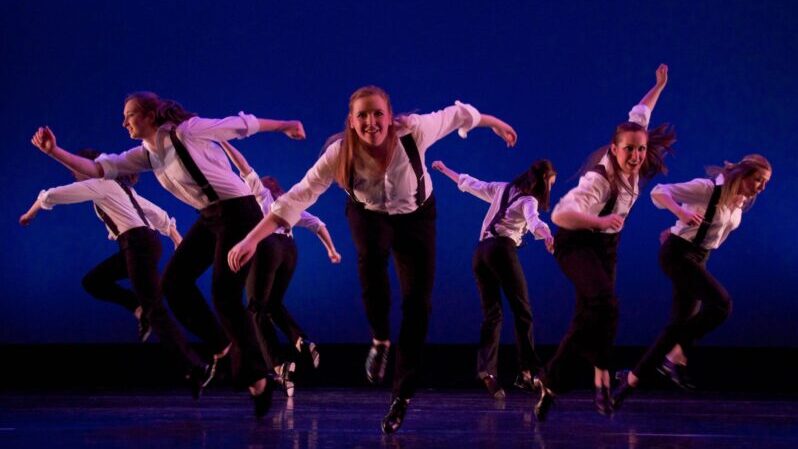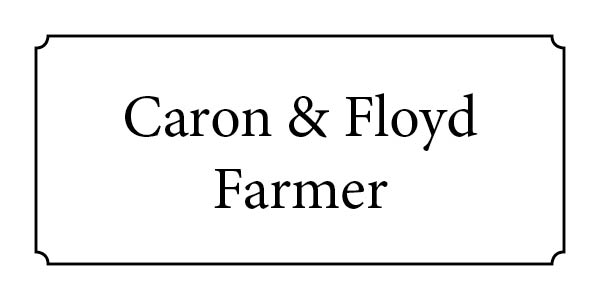Dance into Spring!


Dance into Spring!
Program
Sunday, March 19, 2023 at 3:30 p.m.
Holland Civic Center Place
Johannes Müller Stosch, Music Director and Conductor
H2 Dance Co.
Hope College
Danzon No. 2
Arturo Márquez (b. 1950)
Waltz from Sleeping Beauty
Peter Ilyich Tchaikovsky (1840-1893)
Hungarian Dances 5 & 6
Johannes Brahms (1833-1897)
Slavonic Dance No. 10 in E minor, Op. 72, No. 2
Antonín Dvořák (1841-1904)
Rite of Spring
Igor Stravinsky (1882-1971)
(McPhee Reduction)
PART I: Adoration of the Earth
Introduction
The Augurs of Spring—Dances of the Young Girls
Ritual of Abduction
Spring Rounds
Ritual of the Rival Tribes
Procession of the Sage
The Sage
Dance of the Earth
PART II: The Sacrifice
Introduction
Mystic Circle of the Young Girls
Glorification of the Chosen One
Evocation of the Ancestors
Ritual Action of the Ancestors
Sacrificial Dance (The Chosen One)
Season Ticket Series
This season, the Classics Discovery concert celebrates the medium of dance with the H2 Dance Co., a pre-professional dance company at Hope College, performing the Rite of Spring by Stravinsky. Also performing will be the winner of the 2023 Norbert Mueller High School Concerto Competition. Selected Hungarian Dances by Brahms will also be featured. This concert is designed for families of all ages.
Tickets are $25 for adults and $5 for students through college.
Learn more about the music…
We will be hosting not only the Classical Chat series at Freedom Village, but also Pre-Concert Talks! Details below:
Classical Chats at Freedom Village: These informative and fun talks are led by Johannes Müller-Stosch and take place at 3:00pm on the Thursday before each Classics concert. (Freedom Village, 6th Floor Auditorium, 145 Columbia Ave.)
Pre-Concert Talks: These talks, led by Johannes Müller-Stosch and Amanda Dykhouse, will be online this year under the "Pre-Concert Talk" Tab. There are opportunities for you to ask questions about upcoming programs on that tab. We look forward to resuming live Pre-Concert Talks when the pandemic lessens.
New to the Symphony? Check out the Frequently Asked Question page…
Parking Map at the Miller Center
Holland Symphony Orchestra will reserve and monitor Lot 40 for handicapped parking. The faculty parking lots are available for parking after 5pm

Danzón No. 2
Arturo Marquez
Born: December 20, 1950, Álamos, Sonora, Mexico
Composed: 1994, commissioned by the National Autonomous University of Mexico
Premiered: 1994
Approximate Duration: 10 minutes
Instrumentation: 2 flutes (one doubling piccolo), 2 oboes, 2 clarinets, 2 bassoons, 4 French horns, 2 trumpets, 3 trombones, tuba, timpani, bass drum, suspended cymbals, snare drum, güiro, claves, 3 tomtoms, piano, strings
Arturo Marquez is one of Mexico’s most prominent living composers. He studied at the Conservatory of Music of Mexico, at the California Institute of the Arts, and in Paris. He was the recipient of a Fulbright Scholarship and numerous grants and awards from both the Mexican and French governments, which enabled him to visit and study many diverse places. Recently Marquez has dedicated himself to researching the folk traditions of nearly every region in Mexico. He has become passionate about many traditional genres, and uses his compositions “to pay tribute to them in the concert halls.”
Marquez has used the danzón form on numerous occasions. This genre of dance music traces its roots to nineteenth century Cuba. It describes a dance step involving small movements of feet and hips in a tight square of floor space. Marquez says, “The danzón is today still very popular in Mexico. In Veracruz, there are special town squares where it is still danced two or three times a week. It’s a very strong tradition. In Mexico City, there are special dance halls where only danzón is danced.” He wrote the following description of this danzón:
“The idea of writing the Danzón 2 originated in 1993 during a trip to Malinalco with the painter Andrés Fonseca and the dancer Irene Martínez, both of whom [have] a special passion for the danzón, which they were able to transmit to me from the beginning, and also during later trips to Veracruz and visits to the Colonia Salon in Mexico City. From these experiences onward, I started to learn the danzón’s rhythms, its form, its melodic outline, and to listen to the old recordings by Acerina Mariano Merceron and his Danzonera Orchestra. I was fascinated and I started to understand that the apparent lightness of the danzón is only like a visiting card for a type of music full of sensuality and qualitative seriousness, a genre which old Mexican people continue to dance with a touch of nostalgia and a jubilant escape towards their own emotional world; we can fortunately still see this in the embrace between music and dance that occurs in the State of Veracruz and in the dance parlors of Mexico City. “Danzón 2 … endeavors to get as close as possible to the dance, to its nostalgic melodies, to its wild rhythms, and although it violates its intimacy, its form and its harmonic language, it is a very personal way of paying my respects and expressing my emotions towards truly popular music.”
The explosive, driving rhythm and melodic inventiveness of Danzón No. 2 have made it the most frequently performed contemporary Mexican work. The piece showcases vibrant, lively brass, suave woodwinds and driving percussion. Its Latin energy and sassy dance rhythms are reminiscent of Mexican street music. The music starts with swaying melodies, quickens into sharp, staccato effervescence, calms into a slow, easy tango, then finishes in a dramatic climax.
To listen to Danzón No. 2 , click here.
Hungarian Dances Nos. 5 & 6
Johannes Brahms
Born: May 7, 1833, Hamburg
Died: April 3, 1897, Vienna
Composed: 1868
Approximate Duration: 3 & 4 minutes
Instrumentation: 2 flutes (one doubling piccolo), 2 oboes, 2 clarinets, 2 bassoons, 4 French horns, 2 trumpets, 3 trombones, timpani, strings
Many nineteenth century composers and musicians had a fascination with “Hungarian” music. At various times during this century refugees fled revolutions in Hungary, many looking for a new life in the United States. Brahms encountered gypsy fiddle tunes in a significant way in his late teens when he heard the Hungarian violinist Eduard Reményi, who had a “gypsy style.” The two became friends and toured Europe together in the 1850s as a violin-piano duo. At this time he began collecting Hungarian folk tunes–a project that lasted most of his life. The tunes Brahms collected were not authentic, peasant tunes like those that Bartók and Kodály recorded in the twentieth century. Instead, Brahms gathered the stylized tunes curated for city audiences as they were played by “gypsy bands” in cafes and on street corners. Gradually Brahms wrote these tunes down–retaining their dramatic melodies and quickly changing rhythms and moods–as four-hand piano duets (two pianists playing on one piano). To his publisher, Brahms wrote, the dances were “genuine gypsy children, which I did not beget, but merely brought up with bread and milk.” He enjoyed playing them with friends, and there was an eager market for these duets, so he ultimately published them in two groups: ten in 1869 and eleven in 1880.
Brahms’s Hungarian Dances were so popular that they have been arranged for almost every possible instrumentation. All twenty-one have been orchestrated. Dvořák orchestrated the last five, Brahms orchestrated three, and others, including Parlow, arranged the rest. No. 5 in G minor is the most frequently played and arranged of all the dances. It is based on the Csárdás Bártfai emlék (Memories of Bártfa), by Hungarian composer Béla Kéler. Brahms mistakenly thought this tune was a traditional folk song. No. 6 in D-flat Major opens gently with fast interruptions, ultimately rushing to a rapid conclusion.
To listen to Hungarian Dances Nos 6 & 5 (in that order), click here.
Slavonic Dance in E minor, Opus 72, No. 2
Antonín Dvorák
Born: September 8, 1841, Nelahozeves, near Kralupy, Bohemia
Died: May 1, 1904, Prague
Composed: 1886-1887
Approximate Duration: 6 minutes
Instrumentation: 2 flutes, 2 oboes, 2 clarinets, 2 bassoons, 4 French horns, timpani, strings
Behind Dvorak’s Slavonic Dances lies a story of musical friendship. By the mid-1870s, Johannes Brahms was considered one of Europe’s leading composers and served on a committee to award stipends to talented but undiscovered composers living in outlying provinces of the Austrian Empire. Austria controlled Bohemia, the modern-day Czech Republic, making Dvorák a potential candidate. Brahms was deeply impressed by Dvorák’s music, so in addition to awarding Dvorák a monetary prize, he used his influence to secure performances for Dvorák’s music. Brahms also asked his publisher, the prestigious Simrock, to take on Dvorák and promote his works. Simrock had recently reaped substantial profits from Brahms’ Hungarian Dances for piano four-hands. In 1878, the firm asked Dvorák to create a similar set, based on his own native dance traditions. He responded with eight Slavonic Dances, arranging them for orchestra as well as piano duet. These dances launched Dvorák’s fame beyond his native Bohemia. They were so popular that Simrock asked for another set of eight dances, but Dvorak declined, saying, “You will forgive me, but I simply have not the slightest inclination now to think of such light music,” was Dvořák’s response. “As long as I am not in the right mood for it, I cannot do anything. It is something that cannot be forced.” Eight years later, he was in the mood again and wrote eight more during one month in the summer of 1886.
Dvorák did not base his Slavonic Dances on actual Czech folk tunes. He wrote the melodies himself, orchestrated them colorfully, and filled them with the robust rhythmic patterns and characters of traditional Czech folk music. Each dance consists of two or more dance themes with contrasting moods, keys, and tempos. The first set of dances consisted of lively and joyful Czech dances, but the Op. 72 set is more varied in tone and nationalistic influence. No 2 is a Starodávný, in a triple meter. It begins and ends with a slow, melancholy tune, which Dvořák said should be played expressively, and the middle section provides contrast with a sparkling tune in E Major.
To listen to Slavonic Dance Op. 72, No. 2, click here.
“Waltz” from Sleeping Beauty, op. 66
Peter Ilyich Tchaikovsky
Born: May 7, 1840, Kamsko-Votkinsk, Russia
Died: November 6, 1893, St. Petersburg, Russia
Composed: 1888-1889
Premiered: 1890
Instrumentation: 2 flutes, piccolo, 2 oboes, English horn, 2 clarinets, 2 bassoons, 4 French horns, 2 trumpets, 2 cornets, 3 trombones, tuba, timpani, clochettes, strings
Peter Tchaikovsky wrote three major ballet scores, using his gifts for melody, orchestral color, and rhythm to elevate ballet music to a new level. In 1877 Tchaikovsky debuted Swan Lake, which met with mixed reviews due to its complex and complex music, dark subject matter, and high demands he placed on the dancers. The Nutcracker premiered in 1892. In between these two, Ivan Vseolozhky, director of the Imperial Theater in St. Petersburg, commissioned Peter Tchaikovsky in 1888 to write a ballet set to the story of Sleeping Beauty, a story about a princess who awakens from a magic spell with the kiss of true love from a well-known seventeenth century book of fairy tales by French author Charles Perrault. He wrote, “I want to stage it in the style of Louis XIV, allowing the musical fantasy to run high and melodies to be written in the spirit of Lully, Bach, Rameau and such-like.” Many musical authorities, including Igor Stravinsky, think this is Tchaikovsky’s best ballet music.
This ballet also met with mixed reactions initially. Some thought it was too sophisticated and “French.” Tsar Alexander III, who paid for the lavish staging, said it was “very nice” after going to a rehearsal. Soon, though, audiences responded eagerly and the ballet became extremely popular. Tchaikovsky’s music, along with the choreography and spectacular staging of the original production, became the model for the Russian imperial ballet style.
Eventually a suite of some of the most popular musical numbers was extracted from this ballet, as with almost every other well-loved ballet. The order of movements in the suite doesn’t follow the ballet plot, but is organized based on the musical preferences of the arranger. The suite for Sleeping Beauty opens with the original ballet introduction but ends with the Waltz, which appears in Act I of the ballet. In this movement several courtiers celebrate Princess Aurora’s sixteenth birthday party. This famous tune was also featured in Walt Disney’s animated rendition of this fairy tale.
To listen to the Sleeping Beauty Waltz, click here.
The Rite of Spring (Le Sacre du printemps)
Igor Stravinsky
Born: June 17, 1882. Oranienbaum, Russia
Died: April 6, 1971. New York City
Composed: 1911-12, in Ustilug, Ukraine and Clarens, Switzerland
Premiered: May 29, 1913 at the Théâtre des Champs-Élysées in Paris, as a staged production of Serge Diaghilev’s Ballets Russes
Approximate Duration: 35 minutes
Original Instrumentation: 3 flutes plus piccolo and alto flute (3rd flute doubling 2nd piccolo), 4 oboes and English horn (4th oboe doubling 2nd English horn), 3 clarinets plus E-flat clarinet and bass clarinet (2nd clarinet doubling 2nd bass clarinet), 4 bassoons and contrabassoon (4th bassoon doubling 2nd contrabassoon), 8 horns (7th and 8th doubling tenor tubas, a.k.a. Wagner tubas), 4 trumpets plus high trumpet in D and bass trumpet, 3 trombones, 2 bass tubas, 5 timpani (divided between 2 players), bass drum, tam-tam, triangle, tambourine, guiro, antique cymbals, and strings
Revised Instrumentation (for an orchestra that might fit into an orchestra pit): 3 flutes (including alto flute and piccolo), 2 oboes, English horn, 3 clarinets (including piccolo clarinet and bass clarinet), 3 bassoons (including contrabassoon), 4 French horns, 3 trumpets, bass trumpet, 3 trombones, tuba, timpani, bass drum, cymbals, triangle, tambourine, tamtam, guiro, crotales, strings
The program note below was written by Matthew Farmer.
The Rite of Spring premiered on May 29, 1913, at the Théâtre des Champs-Elysées in Paris, France. In the audience were two differing communities: those of the established elite who had come to the theatre for an enjoyable evening of expected historic art and culture, and those captivated by, and in the throes of, the Bohemian Revolution. These two communities would clash in a predestined event that was both the ignition and culmination of these differing communities: the premier of Vaslav Nijinky's "le Sacre du Printemps" (The Rite of Spring). Before the prelude was even completed, a riot had broken out in the audience as some members cried "ce n'est pas de l'art" (this is not art), and others cried "révolution" (revolution). Two warring communities, each with their own notions of what it means to be a community, to reflect national pride, and, ultimately, what it means to be alive. In today's context, perhaps The Rite of Spring is more necessary than ever.
Ironically the storyline of the original ballet deals with community; specifically, what a community will do in order to ensure its survival. In the original version presented at the Théâtre des Champs-Elysées, the community in the ballet chooses a woman (historically identified as a virgin) to dance herself to death for the gods in hopes of bringing on the spring season; thus ensuring the survival of the community for another year. While today's performance does not follow this original storyline, it does however address the idea of community. What does it mean to live within a community where threats are both external and within? Is it possible that our community, at times, is the very thing that keeps us from growing into fuller human beings? And yet, if/when we need our community, how do we lean on them in spite of its flaws and shortcomings?
When a global pandemic arrives, who is our community? This was the question we all asked ourselves, and this is the question out of which this newest interpretation of The Rite of Spring was born.
To listen to The Rite of Spring, click here.
H2 Dance Co.
H2 Dance Co. is a pre-professional dance company affiliated with the Hope College Department of Dance. It provides professional dance performance and touring experience to its student company members and engages its audiences through artistically and educationally diverse programs.
H2’s repertory spans all areas of dance, and seeks to impact its audiences through works that are versatile, dynamic, engaging and inspiring; ultimately presenting dance that is both accessible and thought provoking.
- This event has passed.
Details
- Date:
- March 19, 2023
- Time:
-
3:30 pm - 5:00 pm
- Cost:
- $25
Venue
- Holland Civic Center Place
-
150 W. 8TH STREET
Holland, 49423 United States + Google Map - Phone
- 616.928.2000
- View Venue Website
Organizer
- Holland Symphony Orchestra
















